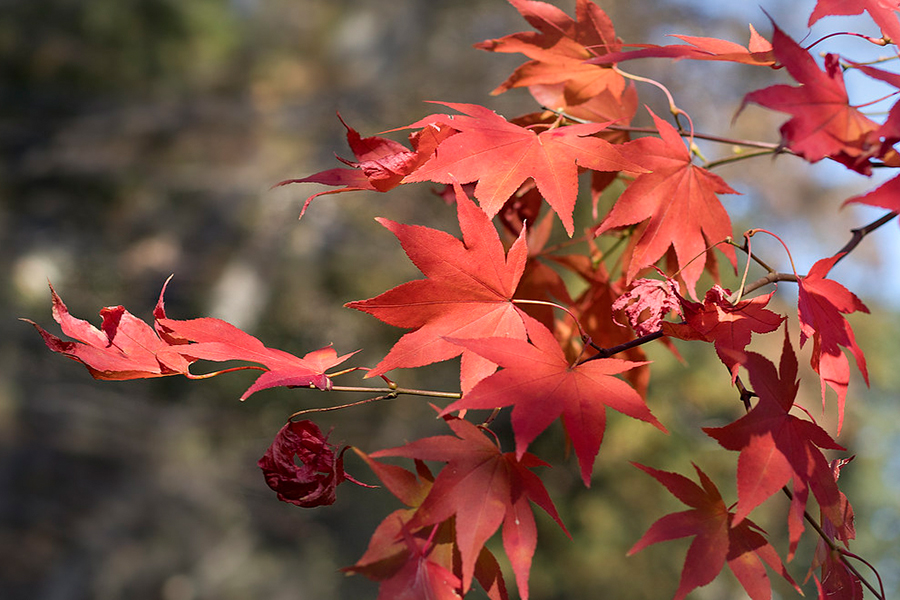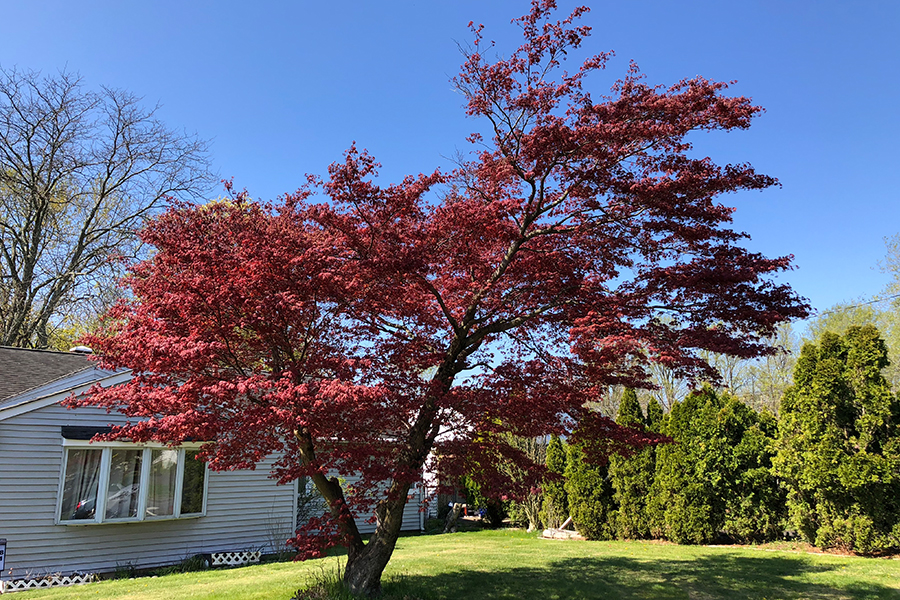Acer palmatum
Japanese maple is one of the most popular ornamental trees. It is cultivated worldwide and known for its striking red foliage.
Location
See if you can spot one as you enter the Magnolia Trail from Lovell Street. Its unique branch structure helps it stand out!


History at Hadwen
Hadwen first notes the Japanese maple in a lecture in 1900. To him, the maple was “a favorite tree which well repays the attention it receives.” In fact, he notes that “the whole family is one of great beauty and its members are in the front rank of deciduous trees.” Since then, the Japanese maple has been documented consistently in the arboretum through the 1900s and into the present day.
Keep Learning
Detailed Species Information
Japanese maple is a deciduous species in the family Sapindaceae native to Japan, Chinese Korea, and small parts of eastern Mongolia and Russia. This small tree typically grows from 20–30 feet (6–10 meters) in height and often takes on a multi-stem form and dome-like canopy. The leaves of this tree are its most distinct characteristic, with five to nine lobes with pointed tips and deep red color. The multi-colored flowers are small with red petals and five white petals. The fruits of the Japanese maple are two-winged samaras, typical of many maple species.
Japanese maple prefers at least partial shade and well-drained soils. In its natural habitat, it can often be found as an understory tree. Despite growing in the wild, the Japanese maple is an enormously popular ornamental tree worldwide and has been cultivated in Japan since the 1800s. Over a thousand cultivars have been developed to emphasize difficult attributes of the Japanese maple, including the popular Bloodgood Japanese maple, Emperor Japanese maple, and Beni Gawa Japanese maple.
